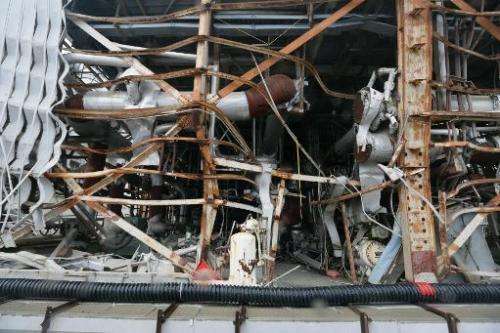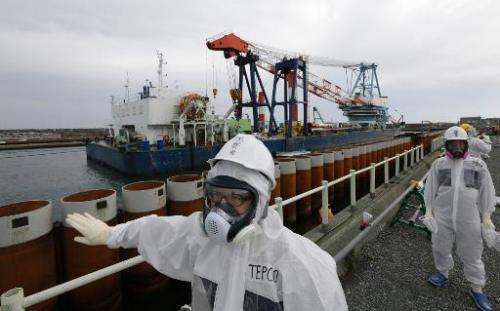Typhoons spread Fukushima fallout, study warns

Typhoons that hit Japan each year are helping spread radioactive material from the Fukushima nuclear disaster into the country's waterways, researchers say.
Contaminated soil gets washed away by the high winds and rain and deposited in streams and rivers, a joint study by France's Climate and Environmental Science laboratory (LSCE) and Tsukuba University in Japan showed.
An earthquake-sparked tsunami slammed into the Fukushima plant in March 2011, sending reactors into meltdown and sparking the worst atomic accident in a generation.
After the accident a large number of radioactive particles were flung into the atmosphere, dispersing cesium particles which typically cling to soils and sediment.
Studies have shown that soil erosion can move the radioactive varieties of cesium-134 and 137 from the northern mountains near Fukushima into rivers, and then out into the Pacific Ocean.
"There is a definite dispersal towards the ocean," LSCE researcher Olivier Evrard said Wednesday.
The typhoons "strongly contribute" to soil dispersal, said Evrard, though it can be months later, after the winter snow melts, that contamination actually passes into rivers.
Local populations who escaped the initial fallout two-and-a-half years ago could now find their food or water contaminated by the cesium particles as they penetrate agricultural land and coastal plains, researchers warned.
Last year, the radioactive content of Japan's rivers dropped due to fairly moderate typhoons. But more frequent and fierce storms in 2013 have brought a new flood of cesium particles.
This is, said Evrard, "proof that the source of the radioactivity has not diminished upstream".
Tsukuba University has completed a number of studies on Fukushima since November 2011.

Scientists "concentrated mostly on the direct fallout from Fukushima yet this is another source of radioactive deposits" that must be taken into account, Evrard warned.
Coastal areas home to fishermen or where people bathe in particular face a potential risk.
Tens of thousands of people were evacuated from around the Fukushima plant following the disaster and nearby villages and towns remain largely empty as residents fear the risks of radiation.
The delicate process of decommissioning the site is expected to take decades.
© 2013 AFP

















